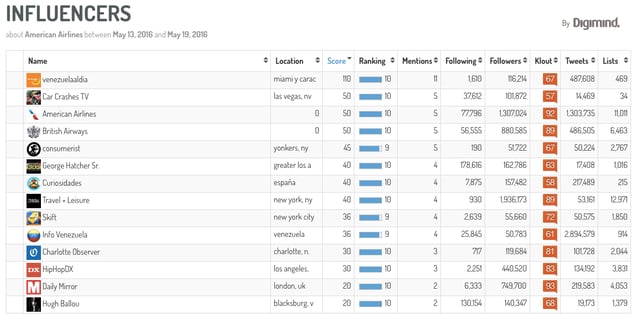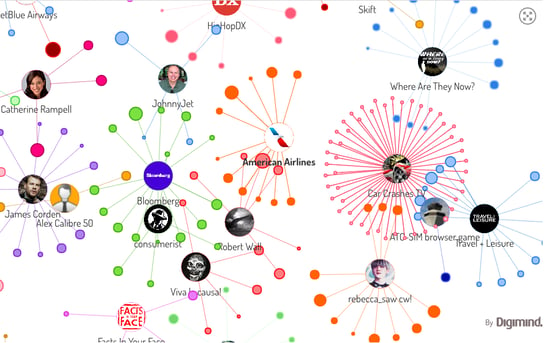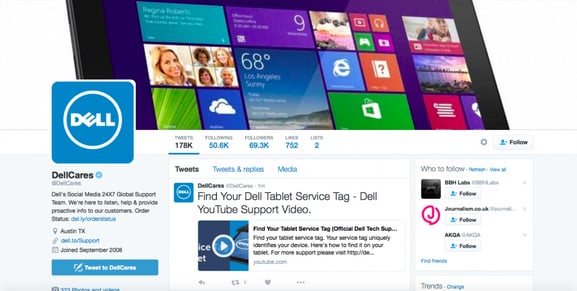The 12 essential benefits of monitoring Twitter: 3. Customer relations & Competitive Intelligence
"67% of consumers now tap networks like Twitter and Facebook for customer service."
In our previous post about the benefits of Twitter for digital marketing, we have seen how the social network could help you analyze crises, discover new sources, measure the impact of advertising campaigns or identify trends. This week, we'll explain how marketing can use Twitter to detect brand ambassadors, evaluate mass opinions, strengthen customer service or learn more about your competitors.
9. Evaluate great waves of opinion
Twitter allows the collection of huge influxes of opinion surrounding real-time events. Well beyond trends related to a product or confined to a city, the mass of messages easily exceed the million threshold mark and know no boundaries. Hashtags are an ideal marker to track and measure.
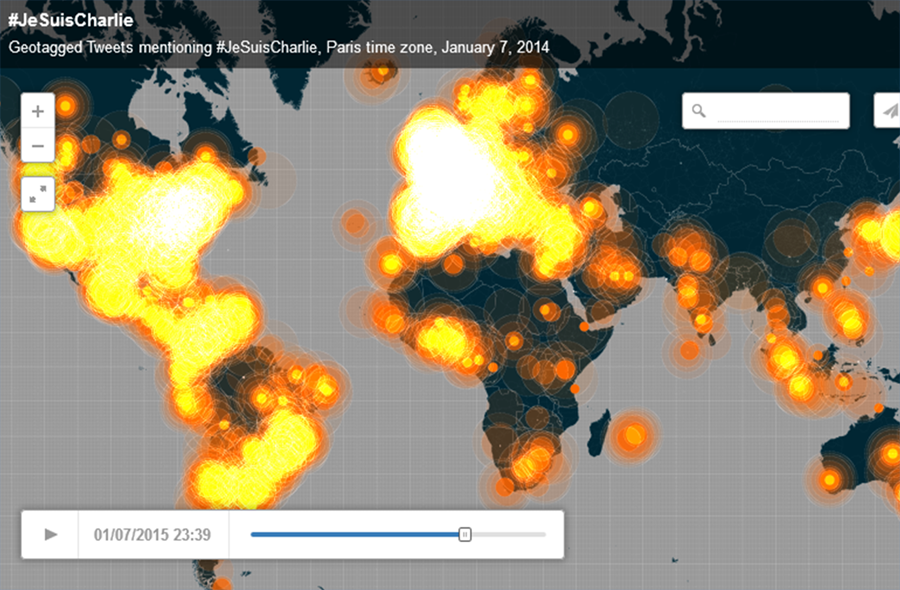 The hashtag JeSuisCharlie was used in more than 5 million tweets
The hashtag JeSuisCharlie was used in more than 5 million tweets
During the dramatic events of the Paris attacks in January 2015, tweets including the hashtag #Jesuischarlie exceeded 5 million. In the following days, there were relatable trends, sometimes very similar, but sometimes also in opposition. Thus, #Jesuischarlie had other 'variations' such as #jenesuispascharlie or #jesuisjuif.
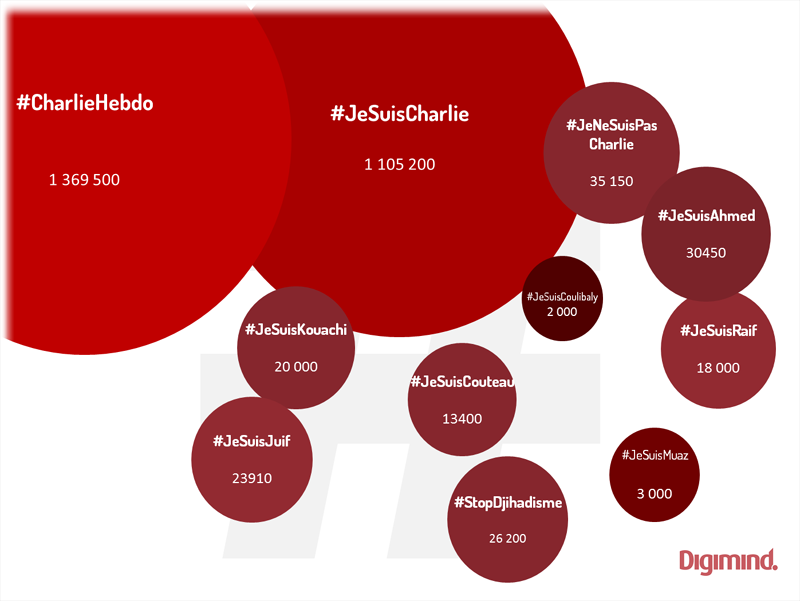 The most used hashtags around #JeSuisCharlie from January 11 to February 11 2015
The most used hashtags around #JeSuisCharlie from January 11 to February 11 2015
10. Get information about your competitors
Twitter also allows you to operationalize competitive intelligence in several ways.
- First, you can of course monitor your competitors' Twitter accounts and their products, if any. If these accounts are not very active and your competitors only reveal a little, this is not enough.
-You can monitor the name of your competitors and their products on Twitter (via simple queries in Twitter search bar). Example: You are McDonald's, Buger King can be monitored via a query like "BurgerKing" OR "Whopper" OR "McNuggets" OR "Stackers"
– You can explore followers, lists and those your competitors are following. Your competitors subscriptions (Following) can be useful in showing evidence of their interests or current activities. Thus, if the Twitter account of a competing consultancy firm follows some business accounts, there is potential that these accounts represent new customers or prospects. Really? In our experience, oh yes 😉.
11. Detect your “influencers”
Of all the major social networks, Twitter is certainly the one that offers the most flexibility in terms of possible criteria to identify potential influencers or brand ambassadors.
– But how can you do it?
First, you need to monitor conversations on Twitter mentioning the names of your own brands and products. You will get all the messages of those who tweet or speak to or about you: some will highlight influencers. Schematically (because it's not always so simple), they are tweeters who enjoy a fairly consistent audience regarding their sector and area of expertise (many followers and / or dynamic subscriber communities). Other tweets come from ambassadors - tweeters who really like and who often know your company or products inside out and are talking about them.
– Influencers and ambassadors are complimentary.
Influencers are ideal for transmitting the values of your brand and establishing an initial contact with the greatest number. The ambassadors will be more suitable because of their expertise, from speaking about the customer benefits of your product to evoking specific key differentiators compared to your competitors. It is therefore necessary to develop tools (such as Social Digimind 😉) that aid the discovery of influencers in your market, the selection of tweeters who positively talk about your brand and sorting them according to criteria adapted to your marketing influence: by audience (followers), relevance, legitimacy (Twitter lists, for example) or through a mix of all these criteria as an overall score.
– The next step is to understand how your influencer communities are connected on Twitter: Are they linked together, are they connected to your Twitter account or otherwise isolated, are they connected with large media or magazines? Dynamic mapping of your tweeters, filtered according to their influence ranking, your brand name and tone of messages, allows you to view the relationship types between communities and better understand who to contact.
12. Beef up your client relationships
Year after year, Twitter is becoming a more and more important tool for customer relationships on the web.
For the last 5 years, Twitter has taken market shares in customer relations from other social networks. In 2011, Facebook was mostly used for this problem. An analysis carried out on the conversations for the Acticall / Digimind study helped to distinguish social media in terms of client expression:
– Facebook was the most used media to enter into direct relationship with a brand
– Twitter was primarily the channel of criticism and "ranting"
– Forums represent the most exploited channel by users to research information and look for advice.
Furthermore, 67% of consumers now tap networks like Twitter and Facebook for customer service (JD Power).
Investing in Twitter for customer service can reinforce the relationship with both your customers and your image. A Twitter account separate from your main corporate account, dedicated solely to customer service, gives customers a channel to directed these specific types of questions and potential complaints. Dell, amongst other brands and retailers in the US are doing just this.
But be careful: it requires a substantial investment! (As does any presence on social networks 😉)
Convince and Convert found that out of those seeking customer support through social media, 32% expected a response within 30 minutes and 42% expect a response within 60 minutes (Convince & Convert).
It takes resources demonstrating responsiveness, perfect knowledge of handling responses and knowing who to transfer a query too (i.e. right department, person) to make it work.
Moreover, Twitter alone may not be enough for customer service on social networks. Even though the 140 character limit on direct messages was removed in summer 2015, for writing long messages: some issues, perhaps more complex, may require other complementary channels such as discussion forums, sometimes making use of brand ambassadors.
These 12 benefits to take away from Twitter for your digital marketing are a selection. There are of course many others. In any case, you should test how to use Twitter for your own brands and markets to determine, through practice, the real gains for your Social Media strategies.
Written by Jerome Maisch
Marketing Manager @digimindci. Passionate about big data & social marketing. Photography, music and hiking lover

